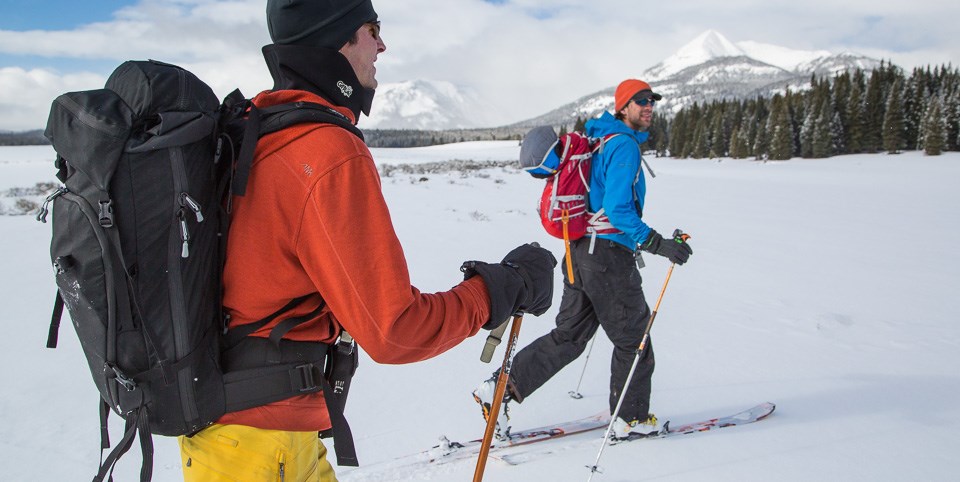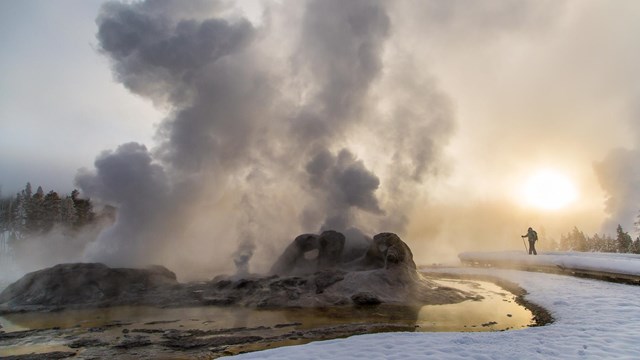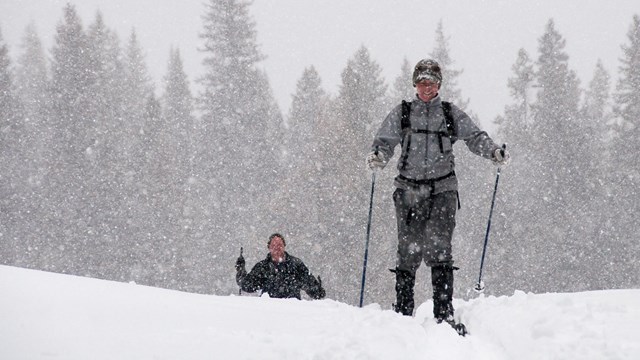
NPS/Neal Herbert Winter temperatures are severe in Yellowstone, but you can be comfortable and confident if you are properly dressed. Prepare for changing conditions by wearing clothes in several adjustable layers. It is as important to prevent overheating/sweating as it is to prevent chilling. Be sure your clothing includes a windproof, hooded outer layer with wool or other insulating garments underneath. Synthetic or wool pants and long underwear will help to keep your legs warm and dry in deep snow. Wind or rain-pants are lightweight and provide extra warmth on windy days. Do not wear cotton clothing since it won't keep you warm if it gets wet. Synthetic or wool socks and gaiters over boots help to keep your feet warm and dry. Wear gloves or wool mittens with removable, breathable shells to allow moisture to escape from sweaty hands. Since you lose more heat through your head than any other part of your body, wear a balaclava or parka hood when you need maximum protection. Sunglasses are a must for sunny days. High altitude sunlight reflected from snow is much more intense than at lower elevations; snow-blindness may occur if sunglasses are not worn. Apply sunscreen lotion to exposed skin to avoid sunburn. For cross-country skiing, choose skis and boots made for touring or mountaineering. Narrow racing skis won't provide enough surface area to break trail. Low shoes won't give enough ankle support. Before you rent or borrow equipment, check for fit and suitability for wilderness use. Equipment that fits both you and park conditions can make or break your trip. 
Explore in Winter
Ready to brave the cold? Check out this information for planning a winter visit. 
Winter Safety
Prepare for cold air, deep snow, and slippery boardwalks. |
Last updated: June 24, 2019
